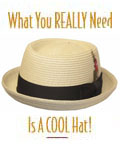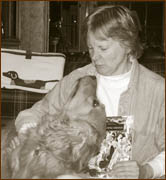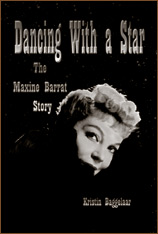
 |
 |
 |
 |
 |

|
|
(2007 Interview) Kristin Baggelaar is the author of "Folk Music: More Than a Song" and "The Folk Music Encyclopaedia." Her latest book, "The Copacabana" was released in 2006 and is available at Amazon, WalMart and most bookstores. In this interview, Kristin tells us a bit about the inspiration behind this engaging tale AND we get some tidbits of Copa history that never made it into the book!
{Craig} What compelled you to write this book about the Copacabana?
{Kristin} My inspiration for writing the book evolved from my enjoyment of music from the  1950s and ‘60s eras of my youth and my appreciation of music from earlier years, in particular, the classic standards of the great American songbook. Also I was driven by my interest in the halcyon days of the glamorous nightclub era - the heyday of nightlife in New York - when Americans were more exuberant, hopeful, and innocent. The book provides a window on an interesting, bygone era in American entertainment history, when night clubs were the primary source of nightlife, top-notch entertainment, excellent food, and spontaneous thrills, unlike anything that exists today. I was curious as to why the Copacabana epitomized the madcap fun, glamour, and sophistication of those high-living days to become a celebrity hangout, for example. I was intrigued by the phenomenon of the Copacabana’s reputation as the pinnacle of show business success. How did it evolve as the showcase for past, present, and future stars like a show business who’s who? How was the Copa instrumental as a springboard to fame for many of the talented, beautiful Copa Girls, like June Allyson, Lucille Bremer, Janice Rule, Joanne Dru, Janis Paige, Julie Wilson, and numerous others? My hope was to write a book that would take us back to this unique era of fabulous, unforgettable nights - the music, the laughter, and all the little things that added sparkle to living during that time, even if we were never there.
1950s and ‘60s eras of my youth and my appreciation of music from earlier years, in particular, the classic standards of the great American songbook. Also I was driven by my interest in the halcyon days of the glamorous nightclub era - the heyday of nightlife in New York - when Americans were more exuberant, hopeful, and innocent. The book provides a window on an interesting, bygone era in American entertainment history, when night clubs were the primary source of nightlife, top-notch entertainment, excellent food, and spontaneous thrills, unlike anything that exists today. I was curious as to why the Copacabana epitomized the madcap fun, glamour, and sophistication of those high-living days to become a celebrity hangout, for example. I was intrigued by the phenomenon of the Copacabana’s reputation as the pinnacle of show business success. How did it evolve as the showcase for past, present, and future stars like a show business who’s who? How was the Copa instrumental as a springboard to fame for many of the talented, beautiful Copa Girls, like June Allyson, Lucille Bremer, Janice Rule, Joanne Dru, Janis Paige, Julie Wilson, and numerous others? My hope was to write a book that would take us back to this unique era of fabulous, unforgettable nights - the music, the laughter, and all the little things that added sparkle to living during that time, even if we were never there.
{Craig} I never realized how prestigious it was to be a Copa dancer. It looks like you got a lot of your information from some of those alumnae. How did you locate them?
{Kristin} Initially I cast a very wide net. I explored a broad range of resources, from newspaper, magazine, and photography archives, collections, and services, to libraries, web sites, fan clubs, and other internet sources. Many of these resources provided leads to track down former Copa Girls and performers. I also worked closely with the Society of Singers, which led me to former Copa production singer, Terri Stevens, who was then SOS Chapter East president. A number of years ago she had been very involved with the now-defunct Copa Girls Alumni Association, so she was able to open the door to numerous contacts. Through Terri I met several women who had been in the chorus line. One person led me to another, and so on. The first-hand information and personal photographs provided by these individuals really contribute an intimacy, authenticity, and humanity, which comprise the heart of this pictorial history.
{Craig} How many people could the club hold?
{Kristin} When the doors opened for business in 1940 the Copa brought the intimate revue east of Fifth Avenue, providing a swanky setting where a capacity of four hundred patrons could see first-class entertainment, eat a full-course dinner, enjoy good music, a full evening of dancing, and drink in the beauty of the Broadway-doubling Samba Sirens (Copa Girls) and their considerable allure. By the end of the second year, the seating capacity was increased to five hundred and fifty. Then in the fall of 1942, by building out the terraces, the club was able to squeeze in six hundred and seventy at the tables, plus another fifty or so at the bar. That was the biggest nightclub capacity on the East Side, and, in fact, one of the biggest in all of New York City. The removal of four large columns, or posts, in the summer of 1955 not only greatly improved visibility by creating a clear floor span but also increased seating capacity to about eight hundred. Along with the posts went the jokes, like the one by Morey Amsterdam, “The first time I played the Copa was before they took down the poles, and my opening line was, ‘This joint’s got more posts than the American Legion.’”
{Craig} Who was the Copa's most popular performer?
{Kristin} That’s a tough question because the Copa’s history spanned a number of decades, and, as such, different performers came into prominence at different times throughout those years. In 1942 Joe E. Lewis became the first talking comic as well as the first big-name star to play the Copa. He remained the club’s number one draw for many, many years. Nowadays people do not even know who he was, but, in his time, before the advent of television, he was the biggest name in nightclub entertainment. Frank Sinatra was another phenomenon, of course. His appearances regularly set records and his opening nights were always a huge, star-studded sensation. Individual checks averaged considerably higher during his runs at the club. Then Johnnie Ray came along. Johnnie Ray’s opening night at the Copa in April 1952 was an even bigger sensation than Frank Sinatra. The first show was a flop because there had been no publicity; but for some reason, the second show was overbooked. There were two lines out on Sixtieth Street, one to Fifth Avenue and one to Madison Avenue. Nobody knew where all these people came from, especially since there had been no paid publicity for his appearance. Never in the history of the Copa had that many major stars been in the audience - Sinatra with Ava Gardner, Noel Coward, Yul Brenner, Como, Cole, and on and on. The newspapers were called, and, within minutes, they all were there, cameras going. There were stories all over the papers the next day. Every night for Johnnie Ray’s entire run, there were lines, for every show. Also, Dean Martin and Jerry Lewis, the hands-down biggest comedy sensation of their day, were enormously successful and enjoyed SRO performances year after year at the Copa. They got their first big break there in April 1948 and had their emotional, final stand there in July 1956. Their farewell show was a night that made show business history. Then there was Sammy Davis Junior, who achieved his dream in the spring of 1954, when the Will Mastin Trio featuring Sammy Davis Junior made their New York café debut as headliners at the Copacabana. The Copa never had more patrons nor took in as much money in its twenty-four-year history, as it did a decade later, in May 1964, with the legendary Sammy Davis Junior as headliner. The two-week stand of Louis Prima and Keely Smith in May 1959 was another memorable event. Not only did the Copa resume a three-show nightly schedule, which was normally reserved for weekends when the club was jumping, but on Saturday, May sixteenth, there was an unprecedented four shows. The Prima-Smith run resulted in a record-breaking take of an estimated quarter of a million dollars, setting a new Copa benchmark.
{Craig} Who's your favorite Copa performer?
{Kristin} That’s even tougher. If I had to name names, I would have to put Sammy Davis Junior on this list. To me, he is the consummate all-around talent - he did it all, sang, danced, played different instruments, you name it - all in his own inimitable way - and, he was a great human being, too. Ex-Copa Girl Michele Hart was in the line in May 1964 when Sammy was headlining and she tells a lovely story about him. “On Sammy’s opening night, he knocked at the girls’ dressing room door and yelled, ‘Is everybody decent?’ and came in to say, hello. On the second night, the same thing happened, but this time he was more relaxed. He noticed the aged record player that one of the girls had brought in. There was no radio reception in the basement dressing room, so the records entertained the girls who remained in the dressing room between shows. ‘Is that your stereo?’ Sammy asked. ‘I’m gonna do something about that.’ And he walked out. He was back a few minutes later, telling us to make sure that someone would be there between shows as something would be delivered. In between shows, the Colony Record Store sent over someone with a terrific stereo system and a dozen records, only one of which was by Sammy. They set up everything, and Sammy was back before the late show to be sure that the speakers were positioned correctly!” Another favorite, for me, is Peggy Lee. I adore her understated elegance, low-key musical arrangements, simple phrasing, and mellow, often whispered lyrics, and I never cease to admire her magic and power to create intimacy in any size space. She was phenomenal, not only as a vocalist, who could be so cool, and so hot, as she runs through the temperature range with “Fever,” for instance, but as a songwriter, stylist, and engaging personality. And I would have to include the incredible talent and sweet, silvery voice of Ella Fitzgerald among my favorites, too.
{Craig} Can you tell us something about the original owner Monte Proser?
{Kristin} Nightclub impresario Monte Proser was the quiet, dynamic force - the entrepreneurial spirit and creative spark - behind the original concept and operation of the Copacabana. This imaginative man, dubbed by Frank Sinatra as “the Genius,” created, built, and ran the world’s great American nightclub in its heyday, before he was muscled out by the Copa’s moneyed organized crime interests. From his early adventures as a press agent, he segued into a number of Broadway and other ventures, from a string of Beachcomber nightclubs - predecessors of the Copacabana - a Madison Square Garden Dance Carnival, producer of Broadway and TV show producer, and owner-operator of La Vie en Rose, to entertainment director of the Thunderbird Hotel in Las Vegas. One day while screening candidates for a new line of Copa Girls, he was smitten by one, the stunningly attractive Jane Ball. The story goes that he glanced up from his racing form, looked at the dancers, pointed to the three most beautiful, and said, “OK, you’re hired. You’re hired. And you, I am going to marry.” He and Jane Ball were married in 1946 and had five sons.
{Craig} How about the succeeding owner, Jules Podell?
{Kristin} Actually Jules Podell was there from the beginning. He was the often violent, profane co-operator, mob representative, and Monte Proser’s bitter rival for control of the club. While the Copacabana was still under construction, Mafia kingpin Frank Costello introduced himself to Monte Proser as his new partner, making it clear to the Broadway impresario that he had no choice in the matter. A week later Costello brought in the ex-op of Broadway’s unsavory Kit Kat Club, Jules Podell, to oversee his financial interests in “Monte Proser’s Copacabana.” It was agreed that Proser would run the front operation, the floor and entertainment, and Podell would control the kitchen and wait staff. Podell became known as the boss man of the Copa. He was a tyrant, who was belligerent and ruthless. He was famous for screaming, spewing obscenities, and slapping waiters. When he was disgruntled, he would bang his huge pinky ring on the table, bang, bang, bang, and everyone would come running, “Yes, Boss? Yes, Boss? What is it, Boss?” In the tug-of-war for control, Monte Proser finally lost out when manager Jack Entratter backed Podell, instead of him. With the Copacabana’s originator forced out, Podell continued to run the club for many years, while Jack Entratter was offered a sweet deal to run the Copa Room of the Sands Hotel in the new mob outpost, Las Vegas.
{Craig} "Three steps up and one flight down." What was above the Copa?
{Kristin} The Copacabana was situated in the basement of the 13-story building occupied by the Hotel Fourteen, located @ 14 East 60th Street. The club’s address designated as 10 East 60th Street and had its own, separate entrance. Three steps led up to the vestibule of the club, from which customers could turn to the right and enter the Copa lounge or turn left and descend a stairway down to the main room of the club. In the heyday of the Copacabana, the stars often would use rooms in the “14,” instead of the small, backstage, star’s dressing room, to rest, dress, and entertain before, between, and after the shows. There was an entrance from the “14” into the Copa kitchen, which opened into the short backstage hallway and led to the main room of the club. There was a funny story about comedian Phil Silvers, who was in the Hotel Fourteen, next door, when Martin and Lewis were playing the Copa. He would come down in his pajamas and tell Martin and Lewis, in the middle of their act, that they were making too much noise. Of course, he got a scream!
{Craig} I'm curious to find out what happened to the great white palm trees from the old club.Your last page in the book said they were moved to the new location.
{Kristin} The old white palm trees @ 10 E. 60th St. were constructed around the existing structural posts already there, so those babies weren't leaving when the club relocated! I don't even know if they're still intact (I don't know what's there now). The new ones are a takeoff on the old theme.
{Craig} Is there anything I can "scoop" from you about the Copacabana that didn't make it into your book?
{Kristin} The tight format of Arcadia’s Images of America series, i.e. limited number of images, brief captions, etc., precluded a ton of information from making it into the book. There are some wonderful stories that could not be incorporated into a condensed pictorial history such as The Copacabana. It seems that everyone has a story, for instance, about Julie Podell, the demanding Copa owner known for his often-imitated, dems-and-doze, growly voice, which everyone loves to imitate. One story about the Four Tops is a favorite. It seems that Podell had booked the hugely popular Motown group for the 1971 prom season to bridge the spring adult trade with the younger June crowd, appealing to both age levels. On opening night, Podell learned that the group wasn’t sure about making their appearance. Apparently the guys were having an argument among themselves. Two wanted to go on - and, two didn’t. Podell was livid. “I paid for four Tops,” he screamed. “I don’t want no two Tops! EITHER I GET FOUR TOPS OR THERE’LL BE NO TOPS!” He got four. Or another story, that typifies the awesome perennial presence of stars in the audience. As Errol Dante, the Copa’s last production singer, tells the story, there was one special night in the fall of 1969, when he started at the Copa. He had just finished one of the production numbers. In the audience there was a frail, small woman, who came up to him as he was walking offstage. She grabbed his hand. “You have a wonderful voice,” she said. Errol kept walking. Copa producer Doug Coudy came up to him, and asked, “Do you know who that was?” “No.” “Judy Garland.”
.........
Be sure to check out Kristin's latest book Dancing With a Star about dance legend, Maxine Barrat


